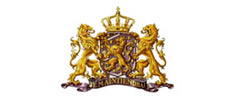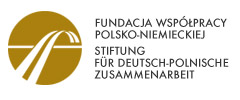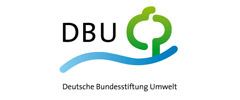International Women's Day
Press release to all WAVE participants with warm greetings from all at UNEP. Who’s Who of Female Environmentalists Launched by UNEP
09.03.2006 |Sascha Gabizon
The women, drawn from across the world, are initially those known as decision makers in the field of the environment in keeping with this year’s theme—“Women in Decision Making: Meeting Challenges, Creating Change”.
Names include UK primatologist Jane Goodall, Inuit leader Sheila Watt-Cloutier, Julia Carabias-Lillo of Mexico, Princess Basma Bint Ali of Jordan, Mei Ng of China, and Nobel Peace Prize winner Wangari Maathai of Kenya.
Pen portraits of their achievements are being published today on UNEP’s main web site www.unep.org
UNEP wants to cover eventually all realms, including activists and grassroots women, up to scientists and politicians who have made significant contributions to environment and sustainable development.
The plan is to publish the compendium as the first fully fledged Who’s Who of women in the environmental world. Klaus Toepfer, UNEP’s Executive Director, said: “International Women’s Day has become a very special day in our calendar and we are marking it with the launch of this project, aimed at raising awareness and the profile of these very special women”.
Noeleen Heyzer, Executive Director of the United Nations Development Fund for Women (UNIFEM), said: “Today, we call for a Global Coalition of Women Economic Decision-Makers – committed to making change happen in the lives of ordinary women and men on the ground”.
“It is important to act now. With the large increase in official development assistance that is anticipated with the roll-out of the new aid agenda,these women can be the building blocks of a power coalition to reshape macroeconomic decision-making—and eliminate the poverty, inequality and insecurity that define the lives of so many,” she added.
Mr Toepfer, echoing Ms Heyzer’s comments, added: "Women are both the victims of environmental degradation and important stewards of a healthy and stable environment. Thus, the cause of women and of gender equality is our cause, too”.
“For example, if we can deliver more abundant water supplies, we can reduce the time spent by girls and women searching for water for cooking and linking. This gives them more time to spend at school and with their families, which in turn benefits for the environment,” said Mr Toepfer.
“For it is the women, particularly in developing countries, who are often in the front line, in terms of managing the land and waterways and sustaining their communities. They are often the custodians of local and indigenous knowledge and conservators of the natural world upon which they and their families depend,” said Mr Toepfer.
The Who’s Who project builds on UNEP’s Women as the Voice for the Environment (WAVE) initiative launched in 2004 and backed by the organization’s Governing Council in February 2005.
Here governments recognized both the importance of women in the fight for sustainable development and the need to mainstream gender equality across the board including in national Poverty Reduction Strategies.
The initiative fed into the 2005 World Summit in September last year where heads of state reviewed the implementation of the 2015 Millennium Development Goals.
Notes to Editors
International Women’s Day is celebrated in many countries around the world. It is a day when women are recognized for their achievements without regard to divisions, whether national, ethnic, linguistic, cultural, economic or political. It is an occasion for looking back on past struggles and accomplishments, and more importantly, for looking ahead to the untapped potential and opportunities that await future generations of women.
In 1975, during International Women's Year, the United Nations began celebrating International Women’s Day on 8 March. Two years later, in December 1977, the General Assembly adopted a resolution proclaiming a United Nations Day for Women's Rights and International Peace to be observed on any day of the year by Member States, in accordance with their historical and national traditions. In adopting its resolution, the General Assembly recognized the role of women in peace efforts and development and urged an end to discrimination and an increase of support for women’s full and equal participation.
The Charter of the United Nations, signed in 1945, was the first international agreement to affirm the principle of equality between women and men. Since then, the UN has helped create a historic legacy of internationally-agreed strategies, standards, programmes and goals to advance the status of women worldwide.
While women’s participation in parliaments is now the highest it has ever been — at 16.3 per cent across worldwide parliaments — this represents only a marginal increase since 1975, when the participation rate was 10.9 per cent. Similarly, women remain underrepresented as top executives in the private sector even in the developed countries, despite educational advances for women in many parts of the world. Several countries, including Norway, have implemented quotas to increase the number of women on boards of directors of companies.
Over the years, the UN and its technical agencies have promoted the participation of women as equal partners with men in achieving sustainable development, peace, security, and full respect for human rights. The empowerment of women continues to be a central feature of the UN’s efforts to address social, economic and political challenges across the globe.
The first Global Women’s Assembly on Environment: Women as the Voice for the Environment (WAVE) was held at the headquarters of the United Nations Environment Programme (UNEP), Nairobi, Kenya, from 11 to 13 October 2004. The meeting was attended by some 150 participants from 65 countries.
Organized by UNEP’s Division of Policy Development and Law, WAVE is part of an increased emphasis by UNEP to bring women’s voices to the forefront of the environmental agenda and enhance the involvement of major civil society groups in environmental management and decision making worldwide.


































